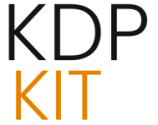Print-On-Demand: Your Book’s Future in 2025
POD Publishing: Your Book’s 2025 Roadmap

The world of book publishing is changing, and print-on-demand (POD) is leading the charge. It’s pretty neat, really – books get printed only when someone actually buys them. This means no more guessing how many copies to print, no huge upfront costs, and no need for a giant warehouse. For authors, it’s a game-changer, offering a way to publish with less risk, keep full creative control, and reach readers all over the globe through online giants like Amazon and Barnes & Noble. With POD services offering convenience, good quality, and wide reach, they’re becoming essential for anyone wanting to share their stories. As we move through 2025, getting a handle on how these services work is super important if you’ve got a book idea you want to bring to life.
Key Trends Shaping the POD Book Market in 2025
Several big trends are really defining the print-on-demand book market this year. One of the biggest is the growing desire for personalized stuff. A lot of customers now expect to be able to customize products, and books are no exception. Think special editions or personalized notes – it’s all about making the reader feel special. Sustainability is another huge factor. Both readers and authors are increasingly looking for eco-friendly ways to publish. This often means thinking digital-first and choosing POD providers that care about the environment. The market itself is also growing fast, especially in places like the Asia-Pacific region, thanks to rising incomes and more people shopping online. Plus, with digital printing getting easier to access and the demand for custom items booming, the industry is really taking off.
The Impact of Technology on Book Printing
Technology is really the main driver behind how book printing is evolving in 2025. Artificial intelligence is now helping authors with all sorts of things, from making sure their book looks good – like formatting and cover design – to picking the right fonts. It’s all about making sure the visual side of the book matches its story and mood. On-demand printing itself is getting even better, allowing for exact production based on real-time orders. This cuts down on waste and makes managing inventory a breeze for authors. Some forward-thinking publishers are even experimenting with things like 3D printing for special tactile elements, like raised lettering on book covers. These advancements are making the whole publishing process more creative and focused on the author.
Amazon Kindle Direct Publishing (KDP): A Dominant Force
When it comes to print-on-demand services in the USA, Amazon Kindle Direct Publishing (KDP) is a big player, especially for authors who are mindful of their budget. The best part? There are no upfront fees, which makes it super accessible for anyone wanting to self-publish. KDP really simplifies the journey from your manuscript to getting it into readers’ hands. Authors get to keep all the rights to their work, which is a huge plus compared to traditional publishing. And thanks to Amazon’s massive global reach, your books can find readers anywhere in the world without needing complicated distribution deals. KDP works for all sorts of books, from novels and children’s books to cookbooks, and you can even republish books you’ve already put out there, as long as you own the rights. It’s easy to use, and you can often get your book published within 72 hours, which is why so many authors choose it.
Recent Developments and Royalty Adjustments in KDP
Amazon KDP has rolled out some important changes regarding royalty rates for print books, which kicked in on June 10, 2025. For paperback and hardcover books priced below certain amounts (like under $9.98 USD on Amazon.com), the royalty rate has dropped from 60% to 50%. Amazon says this is due to rising operational costs, and they’re trying to balance things out for other book titles. However, they’re also lowering color printing costs for some paperback books in specific markets. For example, the cost per page for color printing on Amazon.com has gone down a bit. These printing cost reductions are meant to help soften the blow of the lower royalty rates, giving authors a little breathing room. It’s a good idea for authors to check their book catalogs, use the KDP royalty calculator to see how different pricing might affect their earnings, and keep an eye on those marketplace-specific price points to make sure they’re earning as much as they can. Just so you know, these changes don’t affect ebook royalties.
KDP’s Evolving Content Guidelines and Review Policies
Amazon KDP is also updating its content guidelines and review policies to make sure everything stays high-quality and customers are happy. One new rule is that authors need to provide information about ebook accessibility, especially for readers who have visual impairments. This means making sure all images in ebooks have captions or alt tags. KDP has also updated its community guidelines for reviews. Reviews from friends, family, coworkers, or competitors are no longer allowed. Authors are warned against posting reviews as a form of promotion or in exchange for free copies, gifts, or positive feedback, as this could lead to problems with their account. While the platform does allow authors to update their book interiors and link reviews to new versions if the basic information stays the same, authors really need to pay attention to these new rules to keep their book listings in good shape and avoid any potential issues.
Strategies for Maximizing Profitability on KDP in 2025
To do well on Amazon KDP in 2025, authors need to be smart about their strategies. With the royalty changes, thinking carefully about pricing is super important. Authors have to find that sweet spot between selling a lot of books and making sure they’re still earning enough. It’s worth experimenting with different price points to see what works best and stays competitive. Using Amazon Advertising with targeted ads can really boost a book’s visibility by reaching readers who are interested in specific topics. Also, getting your audience excited before your book even launches, maybe through email lists or social media, can build buzz and ensure you have a ready market. For people selling online, KDP can be a great way to increase brand awareness and earn extra income by tapping into Amazon’s huge customer base. Focusing on creating top-notch content that stands out in an increasingly crowded market is key, as the algorithms are starting to favor books that perform well and get genuine sales over those that just focus on SEO.
IngramSpark: Broadening Reach and Distribution
IngramSpark is known as a professional-level print-on-demand platform that gives authors access to a massive distribution network. Your books can reach tens of thousands of retailers and libraries worldwide, including big names like Target and Barnes & Noble online. The platform really focuses on quality control, making sure both print and digital versions meet high production standards. IngramSpark also makes sales data easy to understand, helping authors make smarter decisions. It’s a great choice for authors and smaller publishers who want a global presence along with high-quality book production. While there are setup fees, they can often be waived with special promo codes, making it a competitive option for those aiming to get their books out there beyond just Amazon.
The Advantages of IngramSpark’s Distribution Network
The biggest perk of IngramSpark is its incredible distribution network. By publishing through them, authors get access to a huge ecosystem of booksellers and libraries all over the world. This means your books can be ordered by pretty much any bookstore or library, giving you a level of reach that’s tough to match with other platforms alone. This wide network is essential for authors who want their books to be easily available to all sorts of readers, no matter where they are. The platform’s connection to the Ingram Book Group’s supply chain ensures efficient order fulfillment and delivery, making it a solid choice for authors who prioritize getting their books into as many hands as possible.
Quality and Customization Options with IngramSpark
IngramSpark really stands out by offering better print quality and more customization options than some other POD services. Authors can pick from a wider range of trim sizes, paper types, and binding styles, including hardcover options. This gives you more creative freedom over the final product, ensuring the physical book looks exactly how you envisioned it. The platform’s commitment to quality control means that books produced through IngramSpark often meet the higher standards that traditional publishing houses expect, which can be a big advantage for authors who want their books to have a premium feel.
Navigating IngramSpark’s Setup and Pricing
While IngramSpark offers some great advantages, authors should be aware of the setup fees for new titles and any revisions. However, these fees are often made more manageable by promotional codes that are frequently available, which can really cut down the initial cost. The platform might also have a bit of a learning curve for beginners because it offers so many features and options. Despite these things, the return on investment you get from expanded distribution and higher quality output makes IngramSpark a really compelling choice for authors who are serious about reaching a wider audience and presenting their work professionally.
Other Notable Print-On-Demand Services
Lulu: Flexibility and Author-Friendliness
Lulu is a print-on-demand platform that’s known for being flexible and author-friendly. It offers several benefits, like no upfront costs for publishing and support for different formats, including spiral-bound books and photo books. Lulu also connects with platforms like Shopify, letting authors sell directly from their own websites. While its distribution might be a bit slower compared to Amazon KDP, Lulu is a fantastic option for creatives, people making workbooks, or anyone looking for an easy-to-use platform with lots of printing choices.
Bookvault: Cost-Effectiveness and Eco-Consciousness
Bookvault really shines with its cost-effective solutions and dedication to being environmentally responsible. The platform offers competitive pricing with low setup fees and discounts for bulk orders, making it a great choice for self-publishers and small presses. Something unique about Bookvault is that they plant a tree for every order placed, which is a nice touch for authors and readers who care about sustainability. Bookvault gives you two selling options: access to a global retail network or automatic connections for direct sales through an author’s website, or you can do both. They print books in both the U.S. and the U.K., which is another plus for a wide international customer base.
Blurb: Specializing in High-Quality Visual Books
Blurb is a print-on-demand company that’s particularly famous for creating high-quality visual books. This includes photography books, cookbooks, and portfolios, where the focus is on amazing print and paper quality. Blurb provides professional design tools, like its BookWright software and an Adobe InDesign plugin, to help authors create stunning visual layouts. For authors whose work relies heavily on images and design, Blurb offers premium print options that can really make their books shine, making it a top pick for content that’s all about visuals.
The Broader Print-On-Demand Market Trends
A major trend influencing the print-on-demand market in 2025 is the increasing customer demand for personalization and customization. Statistics show that a good chunk of consumers expect personalized products as a standard offering, and many are willing to wait a bit longer for custom items. This preference for unique, tailored products creates a strong market for POD services that can meet individual preferences, allowing authors to offer more than just a standard book. This could range from personalized notes inside books to special custom editions, helping to build a stronger connection between the author and their readers.
Sustainability as a Key Consumer and Author Priority
Environmental awareness is playing a bigger role in purchasing decisions and how books are published. In 2025, sustainability and eco-friendly practices are becoming really important for both consumers and authors. Many consumers are even willing to pay more for sustainable products, which opens up a market opportunity for POD providers that are eco-conscious. Authors are also leaning towards digital-first strategies and partnering with environmentally responsible print-on-demand services to reduce their carbon footprint. This growing focus on sustainability fits with a larger societal shift towards more responsible consumption and production.
The Economic Outlook for Print-On-Demand
The economic outlook for the print-on-demand market looks really strong. Experts predict significant growth, with the global POD market expected to more than double in size over the next five years. This expansion is being fueled by various factors, including the popularity of digital printing, the rise of online marketplaces, and the steady demand for custom and personalized items. While the market offers plenty of opportunities, it’s also worth noting that a good number of POD startups don’t make it in the long run, which really highlights the need for solid business planning and a clear understanding of how the market works.
Emerging Opportunities and Challenges for Authors
Leveraging AI and Digital Tools in Publishing
Artificial intelligence and other digital tools are quickly changing the publishing world in 2025. AI is proving incredibly helpful for authors with tasks like formatting, designing covers, and even suggesting fonts that fit a book’s genre and mood. For self-published authors, these tools can speed up the production process, improve the quality of their work, and boost marketing efforts, all without needing a huge budget or a big team. The growing availability of AI-powered narration is also making the audiobook market more accessible for authors, giving them more ways to diversify their publishing strategies.
The Importance of Niche Research and Market Saturation
In the competitive landscape of 2025, doing thorough research into your niche is more crucial than ever for making good money on Amazon KDP. Not all niches are equally profitable, and some markets have become really crowded. Authors need to carefully research their chosen niches, figure out how saturated the market is, and come up with strategies to make their work stand out. While some might think it’s too late to get into the KDP market, there are still hidden niches with potential for organic sales. Finding these opportunities and focusing on creating high-quality content that genuinely provides value to readers is the key to long-term success.
Adapting to Evolving Amazon KDP Policies and Algorithms
Staying up-to-date with Amazon KDP’s changing policies and algorithms is really important for authors. The platform’s move towards algorithms that are based on performance means that getting sales and positive reviews quickly is essential for gaining momentum. Authors need to adjust their strategies to fit these changes, focusing on creating engaging content that grabs readers’ attention right from the start. Understanding the details of KDP’s royalty structure, pricing thresholds, and content guidelines, especially the recent updates to review policies, is vital for navigating the platform successfully and keeping your earnings up.
The Future of Book Publishing and POD Services
Looking ahead, the future of book publishing and print-on-demand services promises even more exciting developments. Trends like blockchain technology for tracking royalties transparently and protecting intellectual property are on the horizon. We’re also seeing the emergence of print-integrated smart features, like NFC chips in book covers that link to extra content. Furthermore, the idea of fully customizable limited editions, where readers can personalize parts of their purchases, represents a new frontier in how authors can connect with their readers. These advancements point towards a continued evolution into a more dynamic, personalized, and technologically connected publishing ecosystem.
Conclusion: Navigating the Future of Self-Publishing
The print-on-demand book service industry in 2025 is all about fast technological progress, changing customer expectations, and dynamic market trends. Amazon KDP remains a major and accessible platform, though authors do need to get used to the recent royalty adjustments and policy changes. IngramSpark offers unmatched distribution for those wanting wider reach, while services like Lulu and Bookvault provide unique benefits in terms of flexibility and cost-effectiveness. As the industry keeps changing, embracing personalization, sustainability, and new digital tools will be crucial for authors aiming for success and navigating the future of self-publishing effectively. Being able to adapt, do your research carefully, and create high-quality content that really connects with readers will ultimately determine your success in this exciting and ever-changing field.









